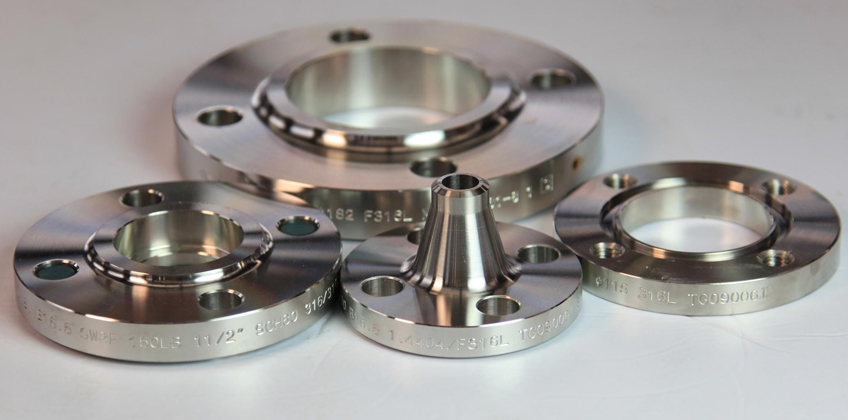Stainless steel flanges come in different types, each designed for specific applications and uses. Here are some of the most common types of stainless steel flanges and their uses:
- Stainless Steel Weld Neck Flanges: SS Weld neck flanges are designed to be butt-welded to pipes and provide a high strength, leak-proof connection. They are commonly used in high-pressure applications, such as oil and gas pipelines, and are preferred where frequent dismantling is not required.
- Stainless Steel Slip-On Flanges: SS Slip-on flanges are designed to slip over the end of a pipe and are then welded in place. They are easy to install and are often used in low-pressure applications, such as water and gas pipelines.
- Stainless Steel Blind Flanges: SS Blind flanges are designed to be used to close off the end of a pipe or valve. They are commonly used in piping systems that need to be isolated or where maintenance is required.
- Stainless Steel Socket Weld Flanges: SS Socket weld flanges are designed to be socket-welded to the end of a pipe. They provide a strong, leak-proof connection and are commonly used in high-pressure applications, such as chemical and petrochemical industries.
- Stainless Steel Threaded Flanges: SS Threaded flanges are designed to be screwed onto the end of a pipe. They are commonly used in low-pressure applications, such as water and gas pipelines, and are easy to install and dismantle.
- Stainless Steel Lap Joint Flanges: SS Lap joint flanges are designed to be used with a lap joint stub end, which is inserted into the flange. They are commonly used in systems where frequent dismantling is required, such as in the food and beverage industry.
- Stainless Steel Orifice Flanges: SS Orifice flanges are designed to be used in systems that require measurement of flow rate. They have a small hole in the center, which can be used to insert an orifice plate, providing an accurate measurement of the flow rate.
- Stainless Steel Spectacle Blind Flanges: SS Spectacle blind flanges are designed to be used in systems where isolation or flow diversion is required. They consist of two metal discs, one with a hole and the other without, and can be rotated to allow or block the flow of fluid.
Each type of stainless steel flange has its own unique uses and applications. By selecting the right type of flange for your specific application, you can ensure a secure and reliable connection in your piping system.

